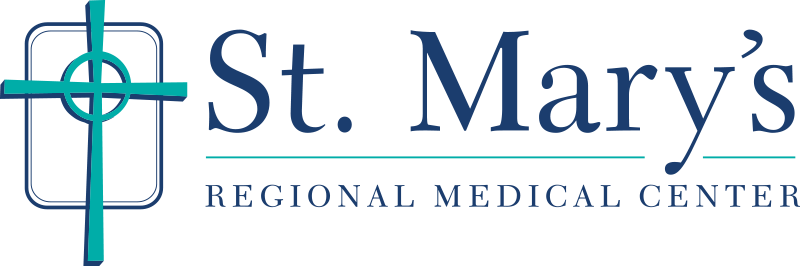St. Mary’s Regional Medical Center now offers the daVinci® Surgical System to provide advanced, minimally invasive treatment for a wide range of conditions – from hernias and gall bladder issues to diseases of the esophagus, stomach and colon, including cancers. Benefits of this surgical approach can include less pain, shorter hospital stays, less risk of complications and quicker return to work, among others.
How Does It Work?
A common misconception is that the robot is performing the operation, but in fact the surgeon controls the entire procedure, says E. Keith Cole, MD, FACS, a general surgeon with St. Mary’s Physician Associates. “The robot is a sophisticated tool in our hands,” he explains. It provides “this unbelievable technology” to expand and enhance what surgeons can do, he says.
With daVinci, tiny instruments are inserted into the body through small incisions, usually less than a half-inch long. A miniature camera sends detailed 3D images to a monitor in the operating room. The pixilation and visualization are “tremendous,” offering 10 times magnification, with the option to zoom for even more detailed views, Dr. Cole says.
The highly advanced robotic instruments are jointed like the human wrist, but with greater ability to bend and rotate, and they are controlled by the surgeon. “Improvements in instruments, ergonomics and visualization allow us to do surgeries we couldn’t before with minimally invasive techniques,” says Dr. Cole. This can open up minimally invasive treatment to a whole new group of patients.
Getting Back to Your Routine Sooner
The recovery from robotic surgery depends on the patient and procedure, but people can usually return to most activities within two weeks, Dr. Cole says. Also, less pain can mean less exposure to narcotics and the potentially harmful side effects these drugs may cause.
Robotic surgery is not an option for everyone, and a full line of traditional surgery services continues to be offered at St. Mary’s, but the availability of daVinci can offer a compelling treatment alternative for some people. More types of surgery continue to be added to those that may be performed with the daVinci robot, Dr. Cole says.
Terri's Amazing Rebound with daVinci
Terri Schultz, 48, was having problems earlier this year with terrible stomach discomfort and bloating that would often have her doubled over in pain after she ate. Her primary care doctor referred her to Dr. Cole for specialized care, and it was determined that her gall bladder was not functioning properly. On March 28, she underwent robotic-assisted surgery at St. Mary’s to have her gall bladder removed.
The procedure started right on time at 7 a.m., and “everyone was wonderful,” Schultz says. At about 10 a.m. that same day, she was discharged from the hospital and went home to recover. “I was really surprised at how good I felt afterward,” she says. “I caught myself overdoing things because I felt so good.”
She had four little incisions that she says healed very quickly. The pain was minimal, and she was able to manage it mostly with ibuprofen. After a week, she was back at work, and her stomach pain was resolved. She went on a girls’ trip soon after and was able to eat and have fun, with no worries.
Before this experience, Schultz had heard of robotic surgery but did not know a lot about it. “I can’t believe how smooth it was,” she says. “I was really amazed by the whole process.”
Individual results may vary. There are risks associated with any surgical procedure. Talk with your doctor about these risks to find out if robotic surgery is right for you.
Visit St. Mary's robotic surgery page to learn more about this technology.

